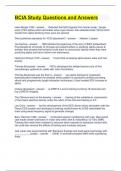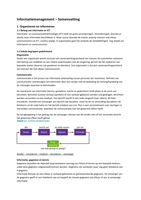Exam (elaborations)
APSC 151 Midterm Questions And Answers
- Course
- Institution
Elastic modulus ~ Relative stiffness of a material; ratio of elastic stress to elastic strain Strength ~ Stress level when failure/yield occurs for a given material Cohesion ~ Shear strength of a material not dependent on normal pressure Friction ~ Shear strength of a material that is depend...
[Show more]










